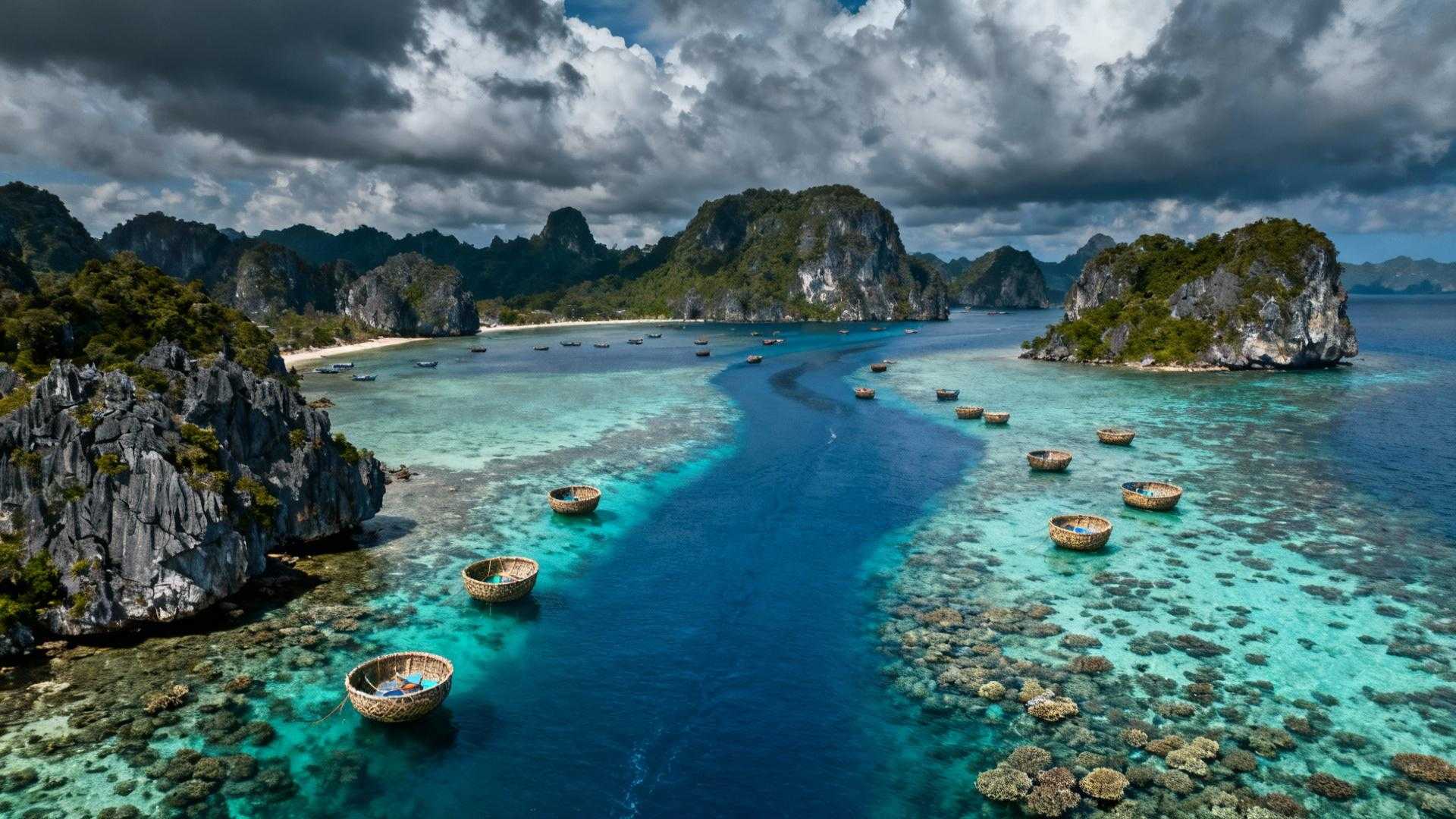I still remember the moment my Vietnamese guide whispered, “Please don’t tell too many people about this place.” We stood on Con Dao’s pristine shore at sunrise, watching traditional basket boats drift past waters so clear I could see endangered dugongs grazing 50 feet below. The fisherman’s grandfather used these same waters. His grandson might not get the chance.
This isn’t another Southeast Asian paradise promising Instagram moments. Con Dao Islands represent something rarer: a Vietnamese community actively protecting their marine sanctuary from the overdevelopment that transformed nearby Phu Quoc from fishing village to resort destination with 179,000 residents in two decades.
The 6,000 locals here aren’t being selfish. They’re being smart. They’ve watched their country’s tourism boom swallow cultural traditions whole, and they’re determined Con Dao won’t become the next cautionary tale. Just like the 733 families preserving 700-year-old traditions in Vietnamese floating villages, Con Dao’s residents understand that protection requires intentional limits.
Why Con Dao’s residents fear becoming “the next Phu Quoc”
The deliberate infrastructure limitations locals fought to maintain
Con Dao operates only two daily flights from Ho Chi Minh City—a 45-minute journey that costs $80-120 round-trip. This isn’t poor planning. It’s protective policy. Local fishing communities lobbied Vietnamese authorities to reject additional flight routes and cruise ship infrastructure that would mirror Phu Quoc’s 89 weekly international flights.
The development restrictions preserving traditional livelihoods
Walk through Con Dao’s fishing villages at dawn and you’ll witness six-generation basket boat traditions unchanged since before French colonial prison guards controlled these shores. Strict zoning laws prohibit resort construction within 500 meters of turtle nesting beaches and traditional fishing grounds. These aren’t tourism marketing gimmicks—they’re legal protections Vietnamese communities demanded after watching Phu Quoc’s fishing culture vanish beneath hotel foundations.
The marine biodiversity that justifies their protective stance
The dugong sanctuary thriving in protected waters
Con Dao shelters Vietnam’s largest remaining dugong population, with marine biologists documenting these gentle giants grazing seagrass beds just yards from shore during March-August calm periods. These endangered mammals vanished from Phu Quoc’s waters within five years of mass tourism arrival. Con Dao’s residents remember.
The sea turtle nesting program locals personally safeguard
Three endangered sea turtle species nest on Con Dao’s protected beaches from May through October, with local rangers conducting nightly patrols protecting eggs from poachers and wayward tourists. Community members volunteer without payment because turtle conservation represents cultural pride, not Western conservation imports. Similar protective spirit exists in Vieques, where locals guard bioluminescent bays with 700,000 glowing organisms per gallon from cruise ship traffic.
How Con Dao transformed dark history into conservation pride
The prison island redemption story locals share carefully
Between 1862-1975, French colonial authorities and later governments imprisoned over 20,000 political prisoners on Con Dao, earning it the notorious “Devil’s Island” designation. Today’s museum complex preserves this painful history respectfully—locals guide visitors through Tiger Cage exhibits explaining suffering without exploiting trauma for tourism revenue.
The environmental rebirth replacing colonial shame
Vietnam designated 80% of Con Dao as national park territory in 1984, transforming former penal colony into marine sanctuary. This wasn’t government mandate imposed on locals—fishing communities championed the designation after witnessing marine recovery in protected zones. Former prison grounds now shelter research stations where marine biologists study ecosystem regeneration.
Why visiting now requires cultural sensitivity and timing awareness
The seasonal windows matching conservation cycles
Visit during March through August when seas remain calm and underwater visibility reaches 98 feet—optimal for witnessing Con Dao’s marine biodiversity without disrupting turtle nesting or dugong feeding patterns. December-February winds create rough conditions locals call “nature’s tourist filter,” protecting sensitive ecosystems during breeding seasons.
The accommodation approach supporting local ownership
Choose family-run guesthouses charging $30-60 nightly over international resort chains that funnel profits overseas. Like the 270 Maldivian locals guarding their $61/night paradise from resort development, Con Dao’s families offer authentic experiences while maintaining economic control over tourism’s impact.
My guide’s whispered request wasn’t gatekeeping—it was an invitation to responsible discovery. Con Dao welcomes visitors who respect protection over popularity, conservation over convenience. The question isn’t whether you’ll visit this pristine archipelago. It’s whether you’ll visit before tourism pressure overwhelms the communities fighting to preserve it, or arrive respecting why they limit access in the first place.
Essential information for visiting Con Dao responsibly
How do I reach Con Dao Islands from major Vietnamese cities?
Vietnam Airlines and VietJet operate direct flights from Ho Chi Minh City (45 minutes, $80-120) and Hanoi starting April 2025. High-speed ferries run from Vung Tau (2.5 hours), though sea conditions December-February often cancel services. Book flights early—limited capacity means weekend routes sell out weeks ahead.
What visa requirements apply for US, UK, and Australian travelers in 2025?
Vietnam offers 45-day visa-free entry for UK citizens and most Europeans. US and Australian travelers need e-Visas allowing 90-day stays with 6-month passport validity required. Apply online 3-4 weeks before departure to avoid processing delays.
When should I avoid visiting to minimize environmental impact?
Avoid May-October turtle nesting season unless joining authorized ranger-led night programs. December-February winds create rough seas disrupting marine life—locals call this “nature’s protection period.” March-August offers calm conditions ideal for snorkeling while respecting wildlife cycles.
